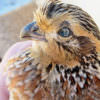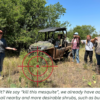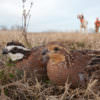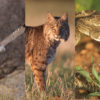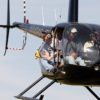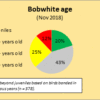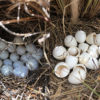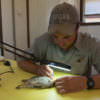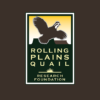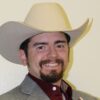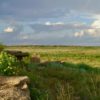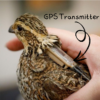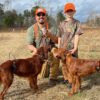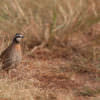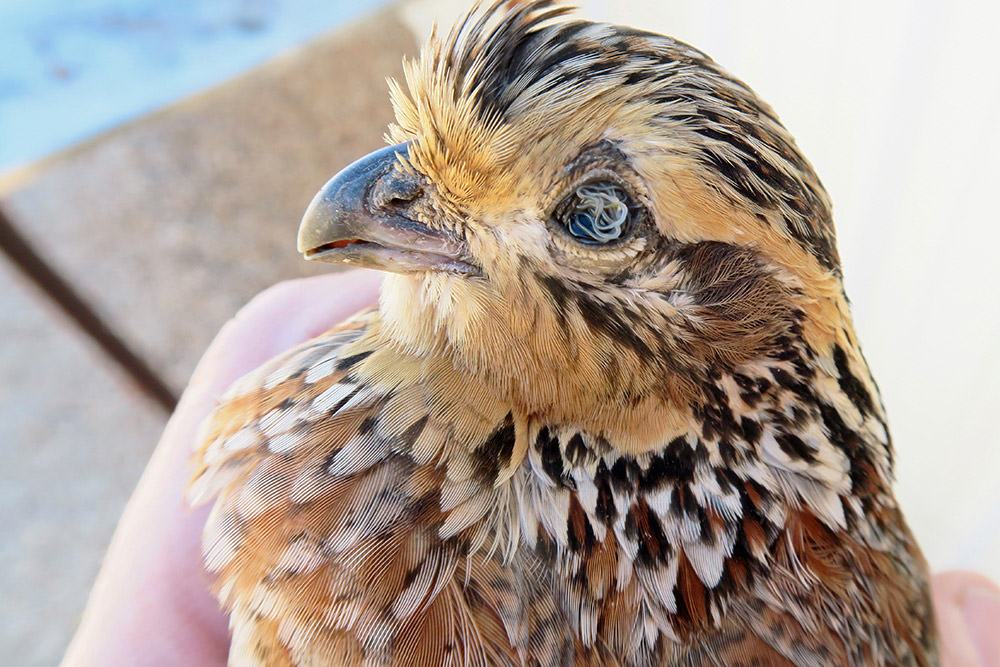
By Matt Williams|Special contributor
7:49 PM on Mar 2, 2019
A half-dozen hunting seasons have passed since wildlife researchers sniffed out a solid connection between parasites and the mysterious vanishing act of bobwhite quail that occurred across the rolling plains of West Texas in 2010.
The finding has since led to a number of promising breakthroughs, including the development of the first medicated feed for treating parasitic infections in wild quail.
Called QuailGuard, the granular feed is awaiting approval from the U.S. Food and Drug Administration. For Ron Kendall, a Kent County cattle rancher, quail hunter and scientist who heads up the Wildlife Toxicology Lab at Texas Tech University, where QuailGuard was developed, approval of the medicated forage for commercial use can’t happen a day too soon.
“It takes a long time to bring something like this forward,” Kendall said. “But there is a solution on the way.”
He was heavily involved in a long line of research studies that led to the identification of two parasites — eyeworms and caecal worms — that scientists believe played major roles in the significant decline in the region’s bobwhite quail population.
The 2010 crash was particularly alarming because it came at a time when all the common denominators pointed to a boom year for bobwhites and a welcomed windfall for local economies driven largely by money from quail hunters. Poor habitat and drought — two factors with long histories of driving bust cycles of quail — weren’t part of the equation.
“Everything was set up for a great hunting season in 2010,” Kendall said. “The habitat was in perfect shape throughout the summer all across the rolling plains. You had to be really careful driving around ranch roads because there were so many broods. Then, come fall, you couldn’t hardly find a quail. I’m not talking about losing a few. Many ranches lost 70 to 90 percent of their birds.”
That’s when the Rolling Plains Quail Research Foundation enlisted a team of scientists from Texas Tech, Texas A&M and Texas A&M-Kingsville to launch a quail disease project that is arguably the largest ever conducted in the United States. The ongoing study is also the most costly of its kind with millions in funding provided by the Park Cities Quail and Texas A&M AgriLife Extension Service.
The project was tagged Operation Idiopathic Decline — medical jargon that means the “doctor doesn’t know,” according to Dale Rollins, the foundation’s longtime executive director.
While the perplexing puzzle of quail declines is far from being solved, scientists say the cause of feathered calamity isn’t near the mystery it was nine years ago.
After dozens of large-scale trapping, sampling and testing efforts involving numerous ranches and thousands of quail, experts now know more than ever about how parasitic infections can impact quail and decimate their numbers.
“It can be drastic,” Kendall said. “Quail live in coveys. If one bird gets something, the whole covey will usually get it. Once these epidemics start, they can sweep across a county or much larger area in a matter of weeks.”
/arc-anglerfish-arc2-prod-dmn.s3.amazonaws.com/public/UCNTOCKOTG4SALZBJQW42KAQDE.jpg)
The culprits
Quail have all sorts of enemies in the wild. Eyeworms and caecal worms have been recognized in quail for years, but the new research suggests the problems caused by the parasites may be worse than originally believed.
Kendall says eyeworm and caecal worm infections occur by quail ingesting insects such as wood roaches, field crickets and several species of grasshoppers.
Both parasites reproduce at rapid rates and are physically debilitating to quail. Eyeworms feed on sensitive tissues in a bird’s eyes and nasal passages. Kendall believes they can compromise a quail’s vision so badly that it can’t detect predators and may even fly into barns and vehicles or have difficulty finding food.
Caecal worms, meanwhile, gather within the intestines. Scientists believe this robs the birds of valuable nutrition and energy they need to flee danger and could weaken their immune system and reduce breeding success.
“It’s not like the bird gets a lot of parasites and falls over dead,” Kendall said. “They never get to that point, because predators kill them before they do. A quail must be able to see extremely well and fly at high speeds with great velocity to avoid predators like the Cooper’s hawk. Anything that affects their vision or suppresses their energy puts them at risk of predation.”
Good medicine
While eradication of the parasites would be ideal, Kendall believes the main goal is helping prevent widespread epidemics and significant quail crashes known to stifle hunting prospects for several years as responsible wildlife managers wait for populations to rebuild.
“It’s a strategy that we hope will take the low bottom out of these crashes,” Kendall said. “Instead of losing 70-90 percent of your birds, you may only lose 40-50 percent. We can’t do anything about the weather, but we’re going to give wildlife mangers the ability to take the parasite problem out of the equation.”
Kendall says QuailGuard has undergone extensive testing and shown encouraging results at numerous demonstration sites throughout the rolling plains.
“We have a pretty high level of confidence in it,” Kendall said. “As this whole thing unfolds, we feel like we are onto something really significant in wildlife conservation.”
The scientist said QuailGuard isn’t a preventative for year-round use. It works best when administered during early spring and late summer, when high-level infections tend to occur. “It will treat birds with early-stage larvae and it will get the adult worms,” Kendall said.
Kendall and his son Ron Jr. have also developed a rigid feeding station for dispensing the medicated granules or supplemental feeds such as milo. The metal station, called QuailSafe, is designed to keep competitors and predators out while quail feed safely inside.
The cost to the consumer has not yet been determined, but Kendall believes a landowner will be able to effectively treat quail on a 6,000-acre ranch for around $2,000 a year once the feeding stations are in place. The number of feeding stations required for 6,000 acres could range from 10-20, depending on the lay of land and how intensely a landowner wants to treat, Kendall said.
“The good thing [the feeding stations] last indefinitely. A cow or hog can’t wreck them,” Kendall said. “Once the quail learn it, they teach their prodigy and it becomes a learned behavior to come back daily. We’ve had hens bring their broods to the feed from as far as a quarter mile away.”
To learn more about QuailSafe and to see a high-quality video chronicling its history, check out thebobwhite.com.
Originally published @ https://www.dallasnews.com/sports/other-sports/2019/03/03/medicated-feed-for-treating-parasitic-infections-in-texas-wild-quail-awaits-approval/
Matt Williams is a freelance writer based in Nacogdoches. He can be reached by e-mail at mattwillwrite4u@yahoo.com.

